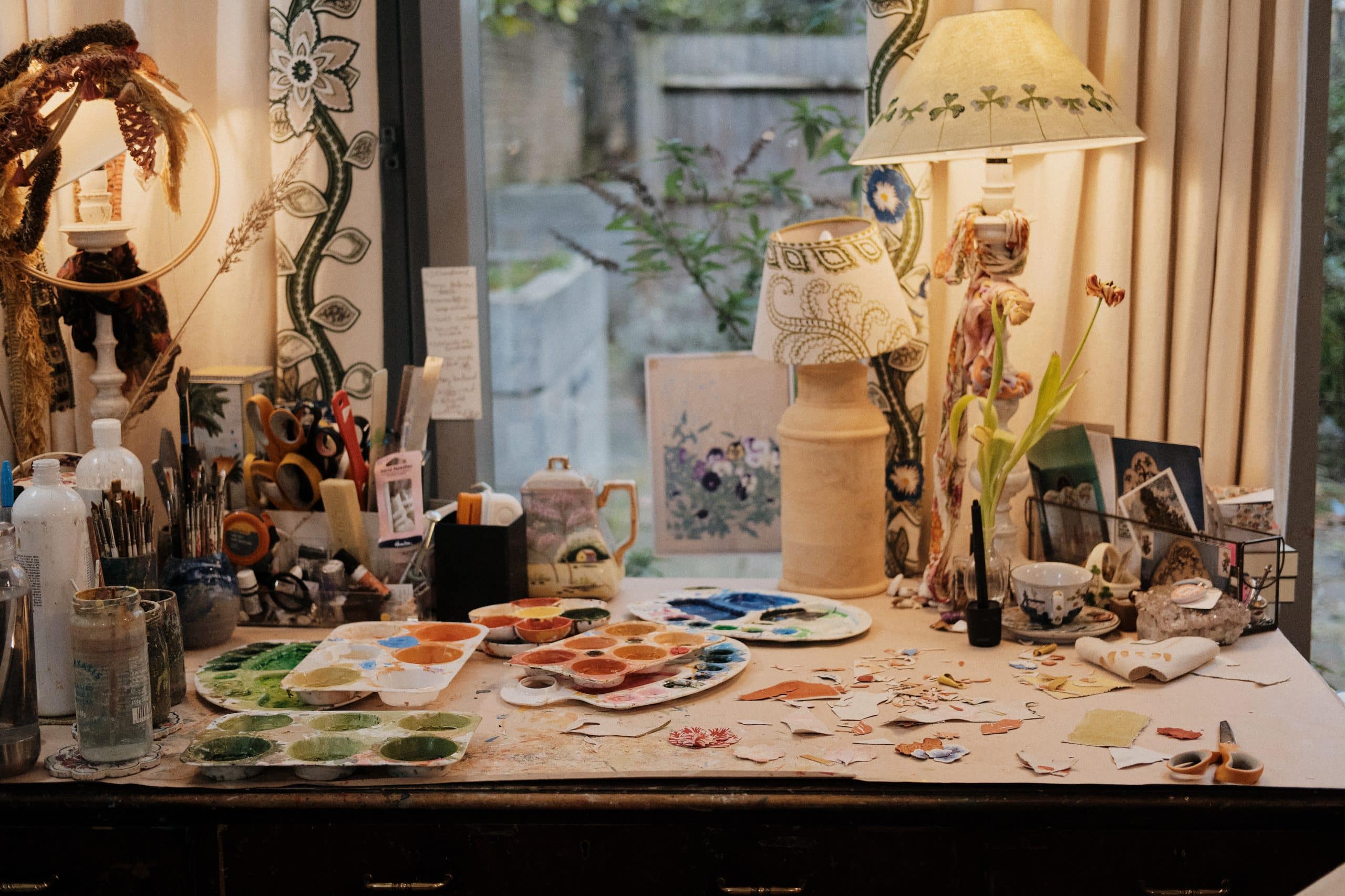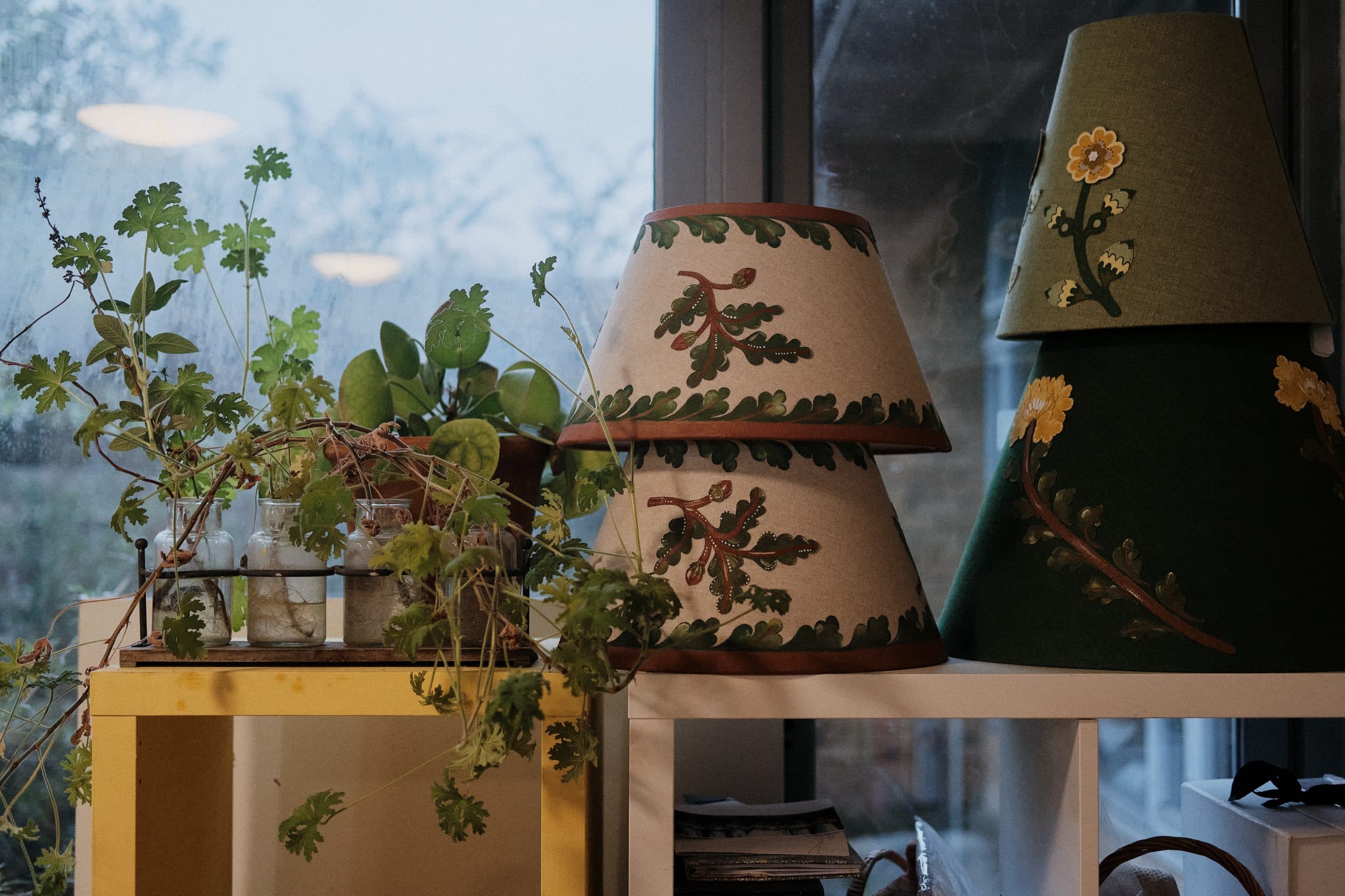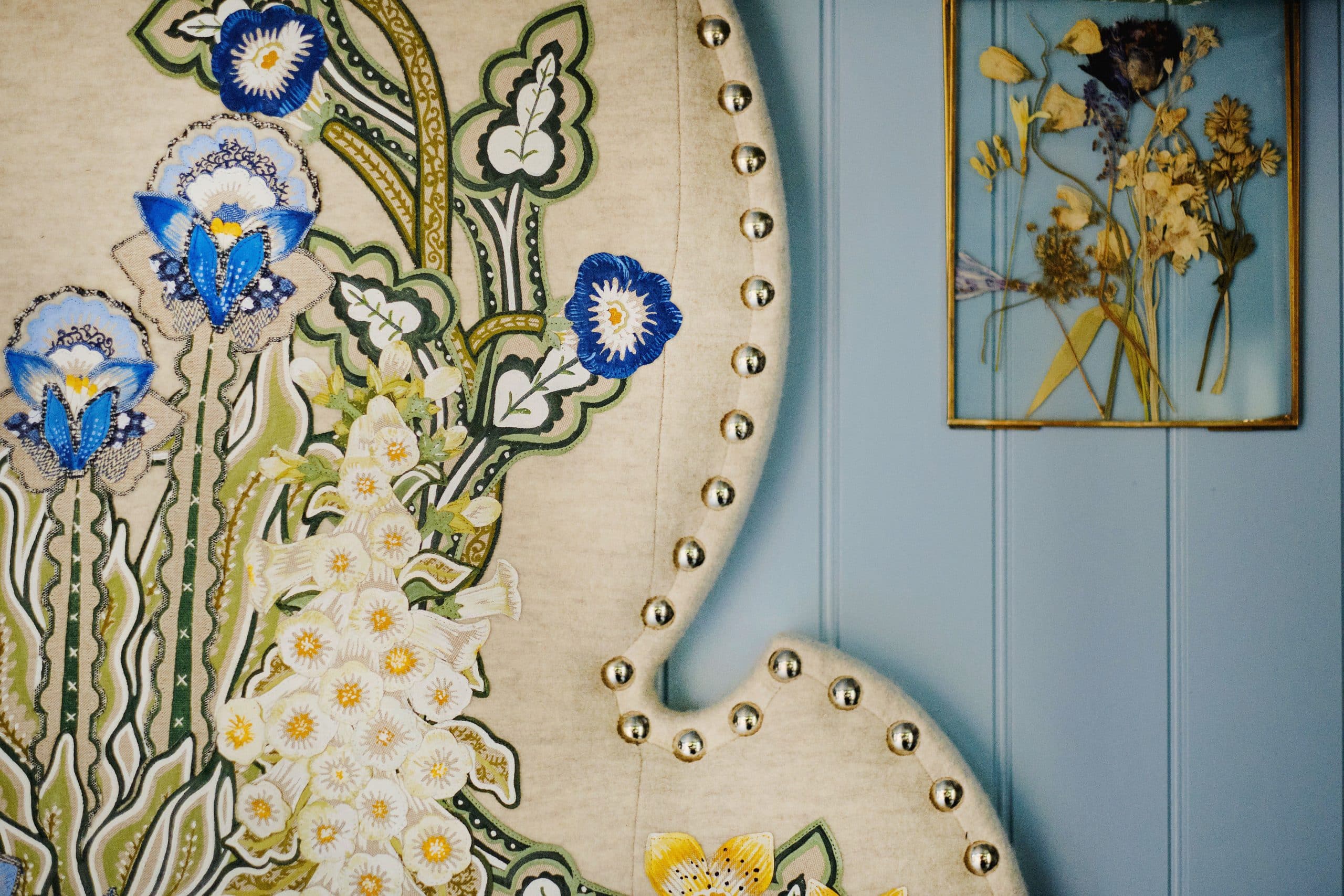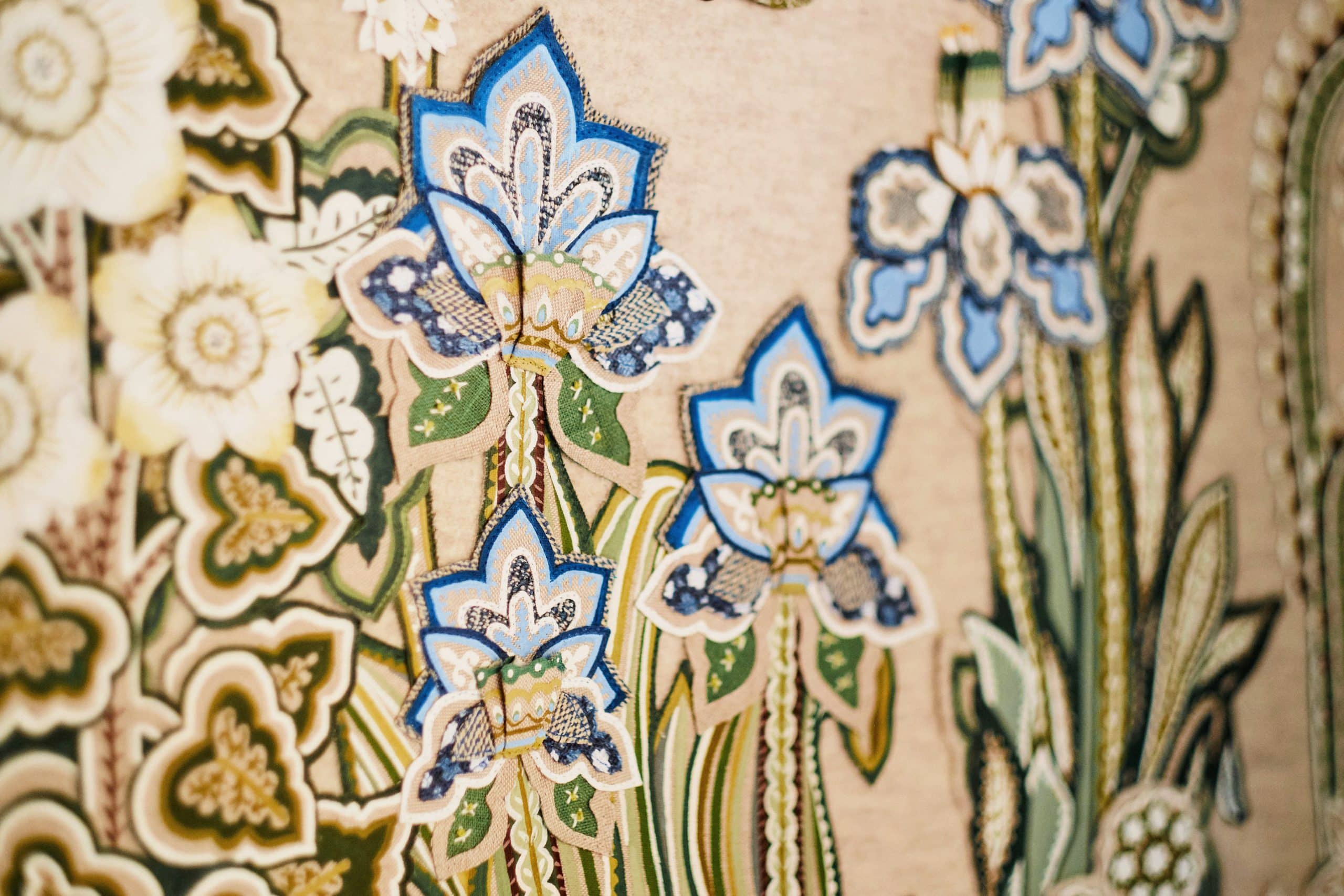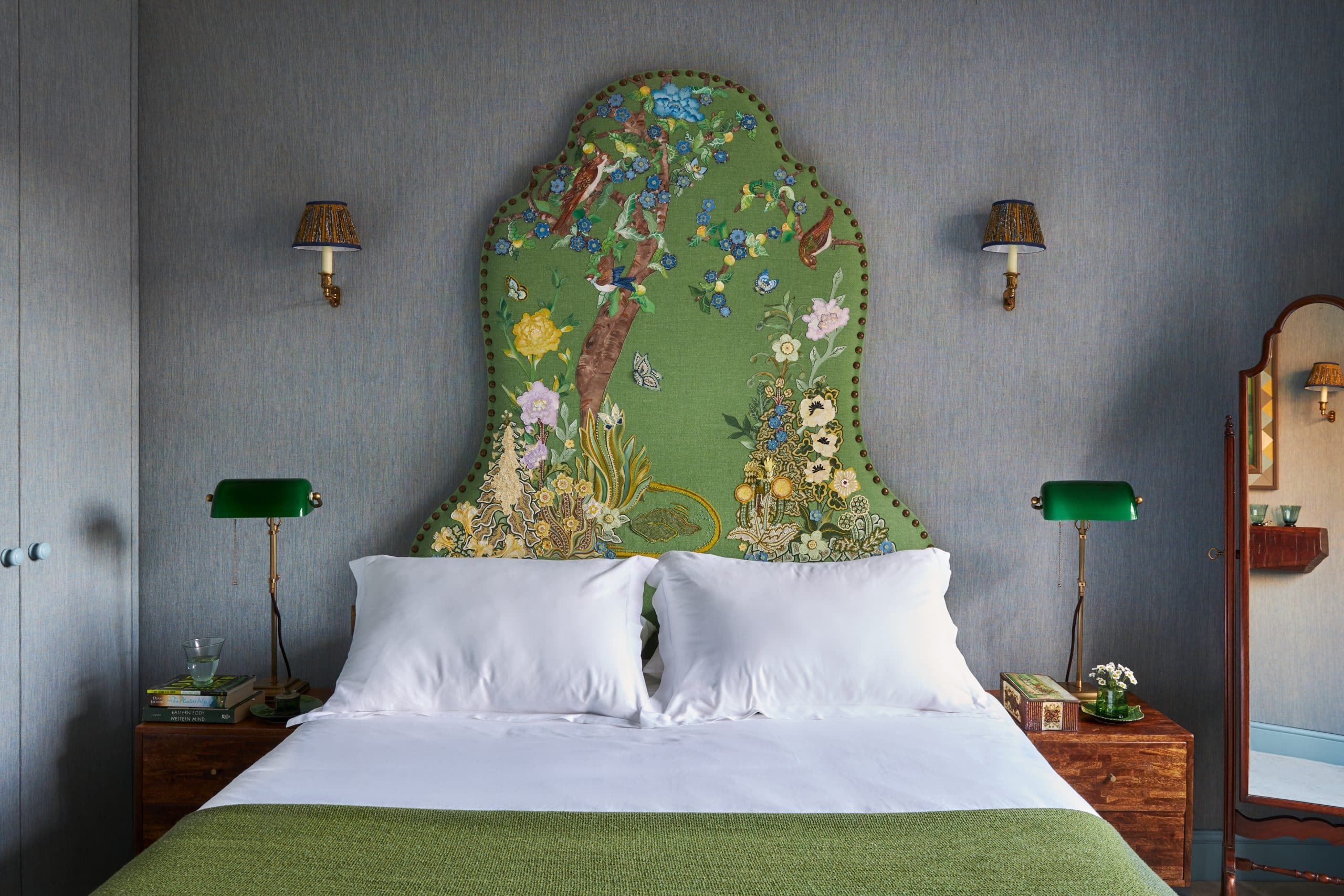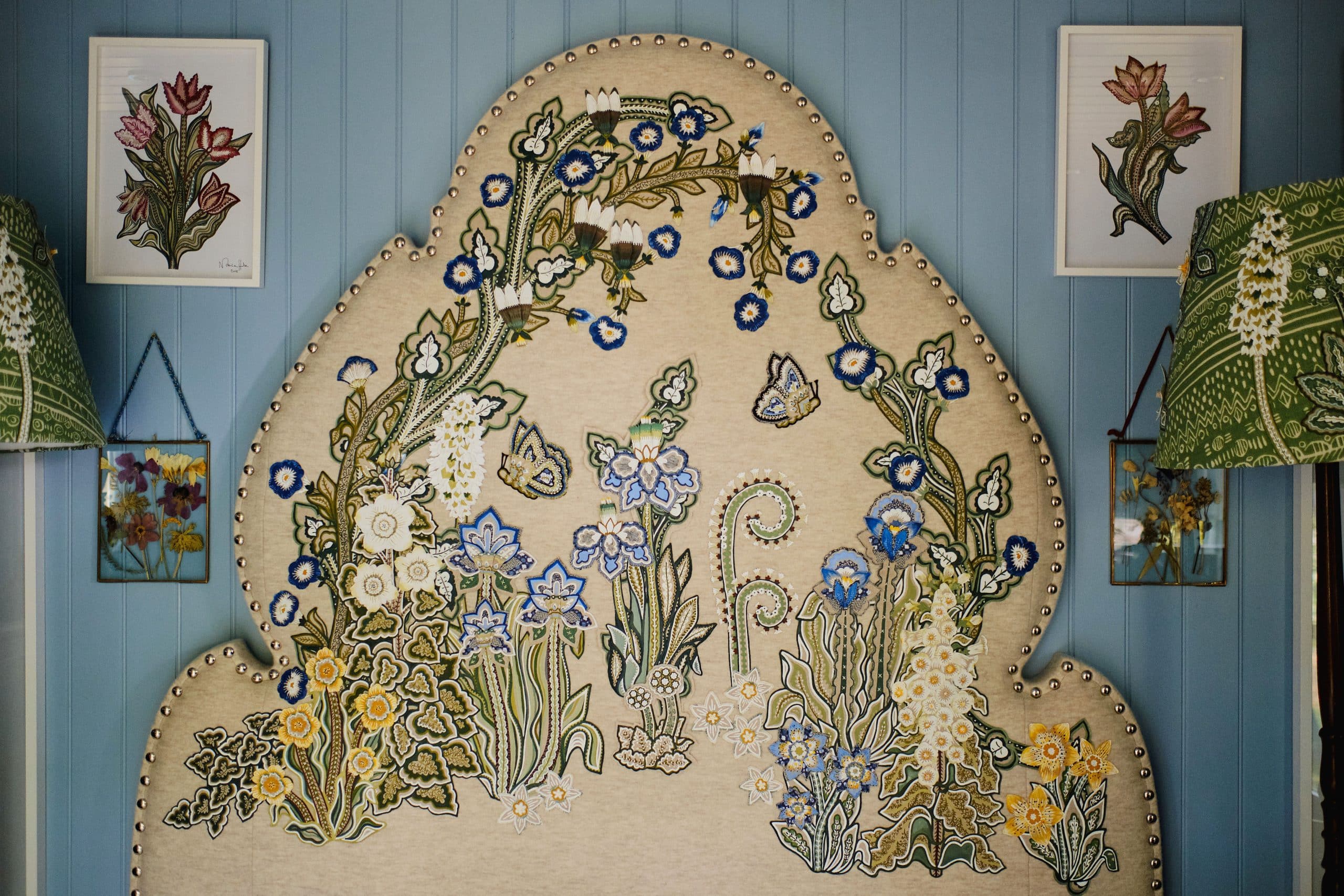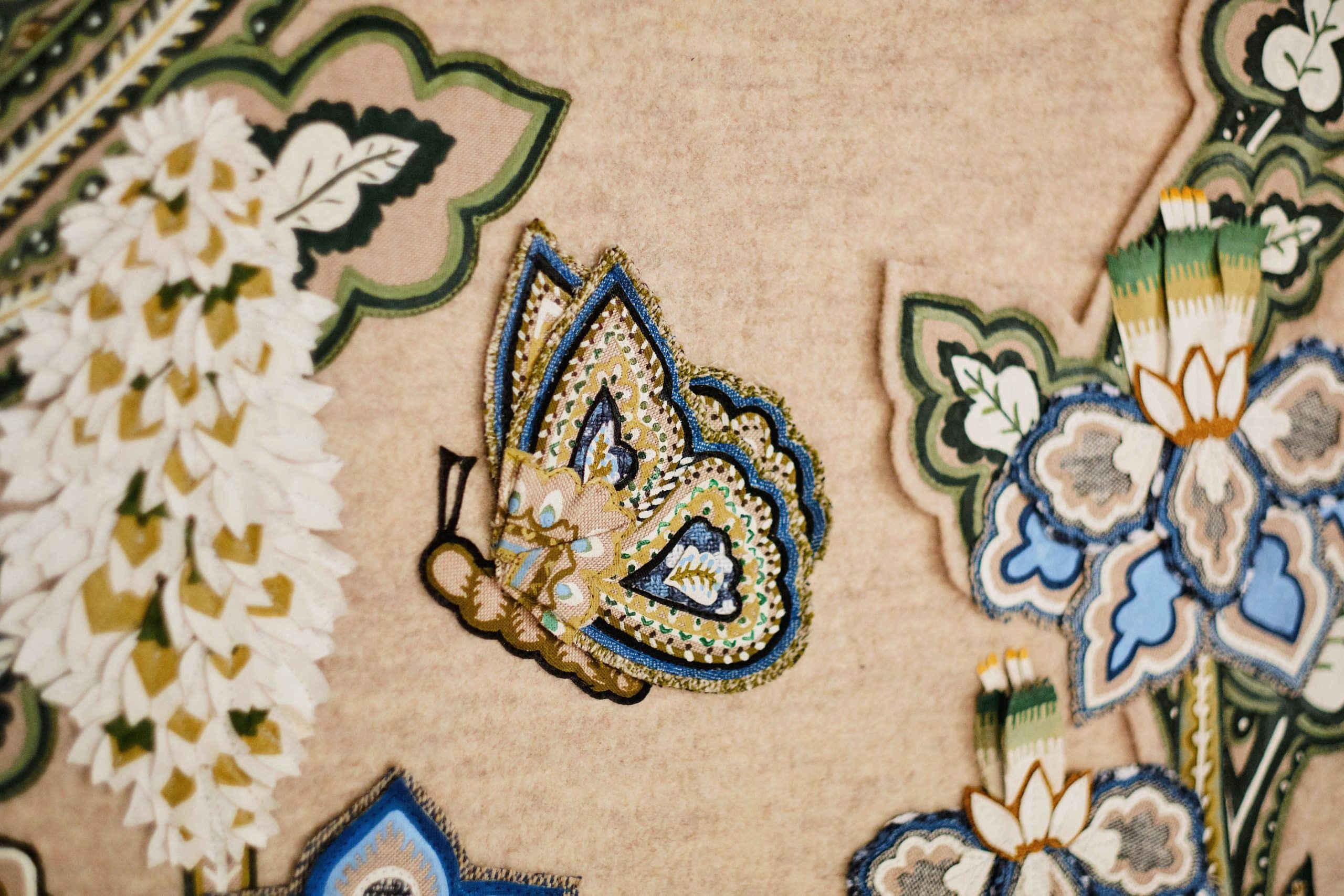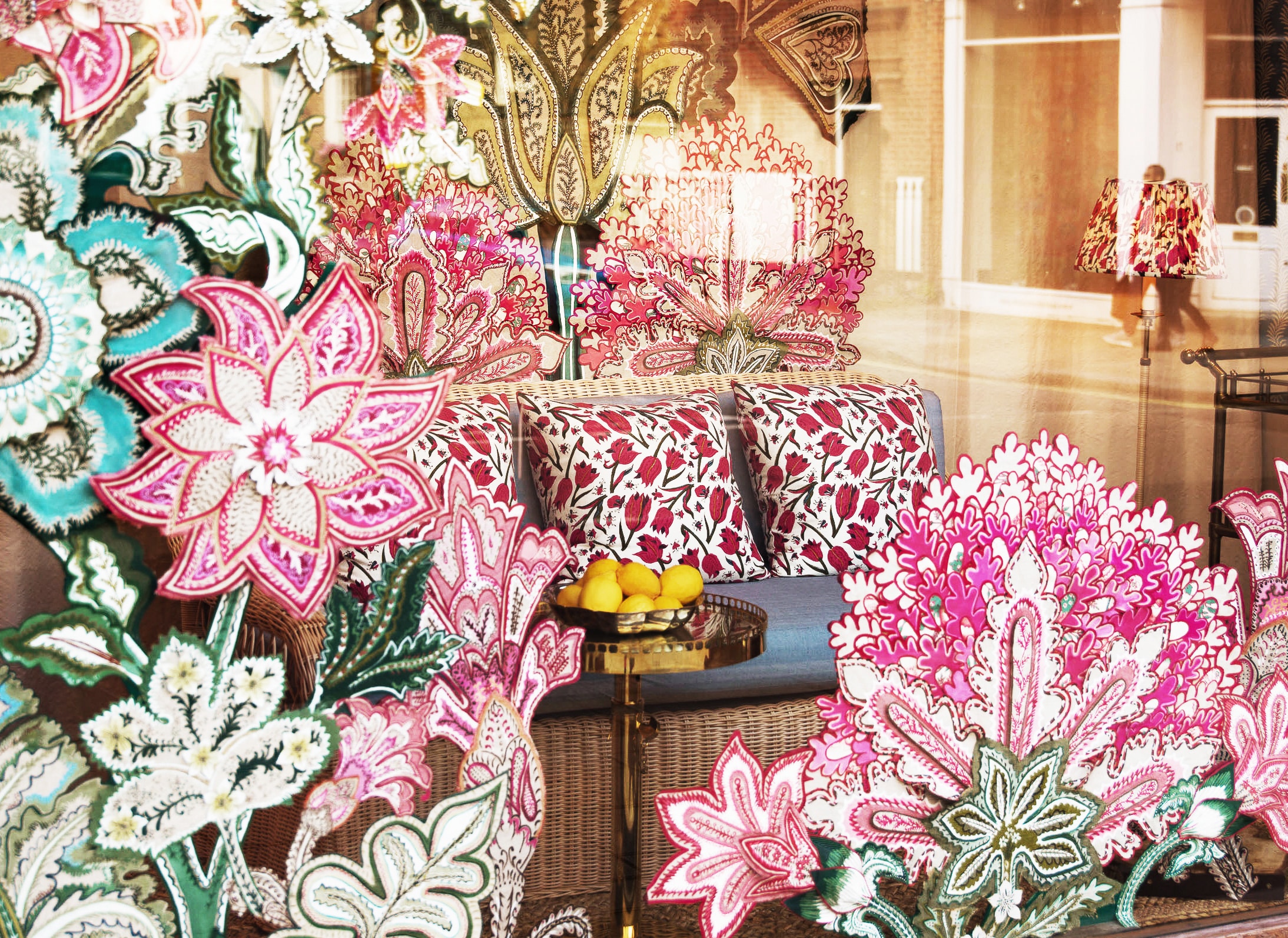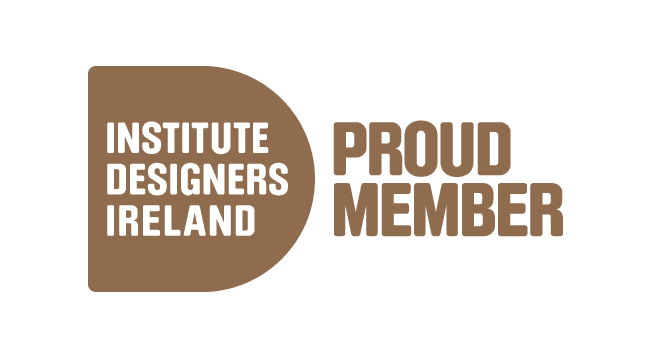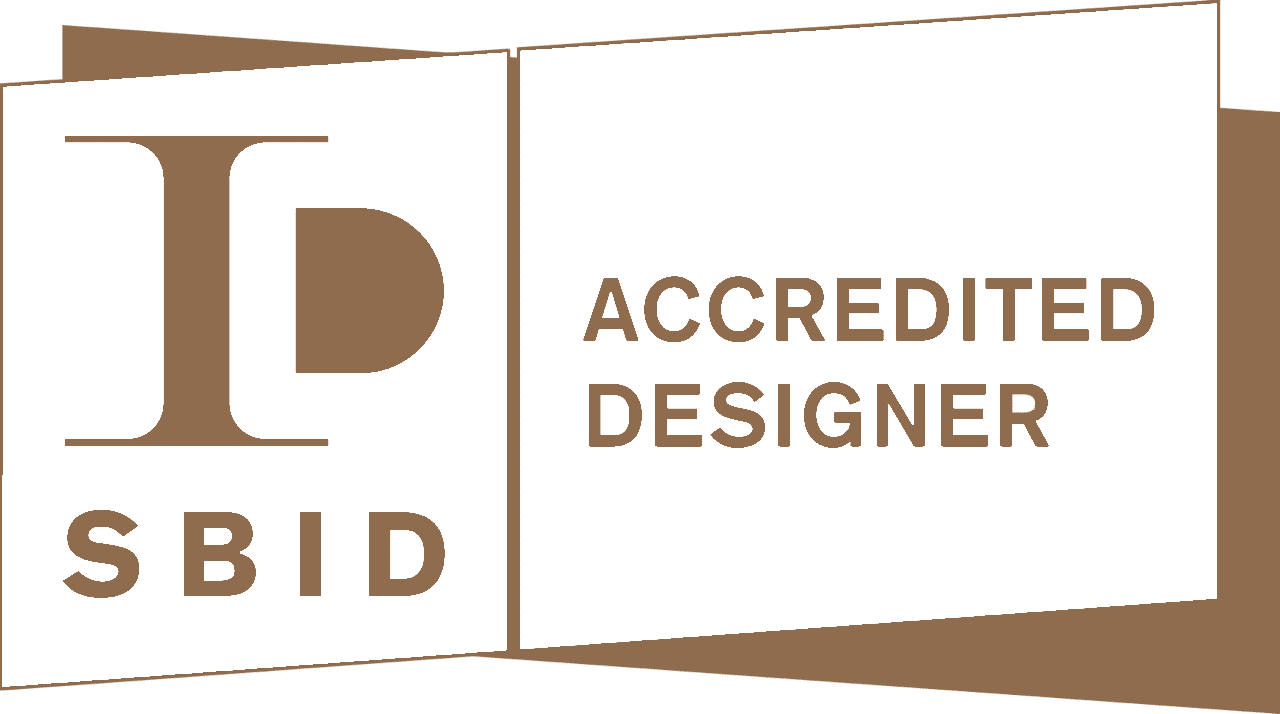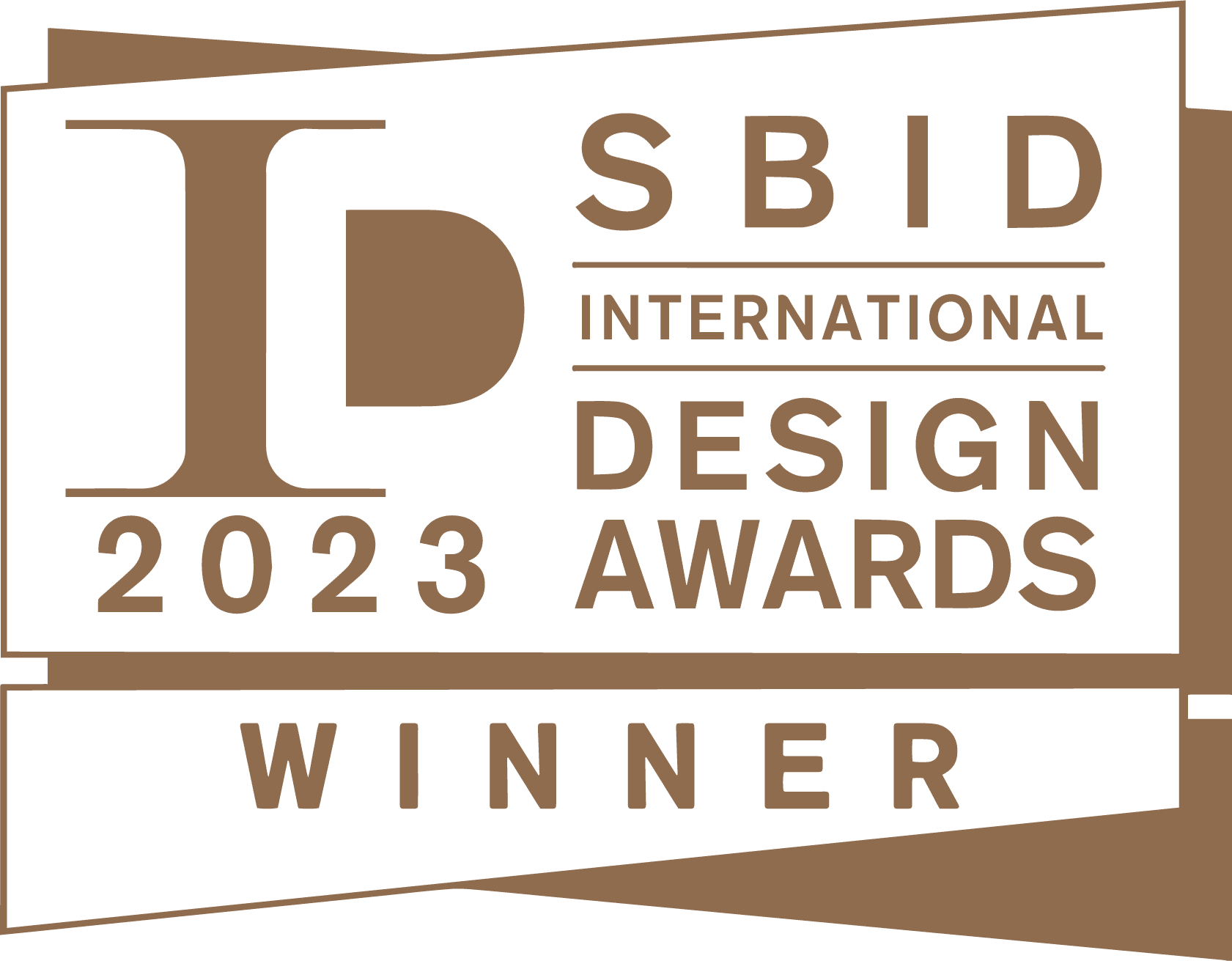Imagine the ultimate creative endeavour within the realm of your craft – what would it look like? What elements, themes, or challenges would make up this dream project, and how would it showcase your vision?
I would like to work on more large-scale projects, including fabric walling, large panels, murals and installations for hotels and public spaces. I enjoy creating one-of-a-kind artworks that can’t be replicated, so that is important to me. However, that being said, it is important to have a commercial side, so I am looking into a collaboration of silkscreen and applique. Something I am looking to develop with clients is painting a mural on the wall and then adding a three-dimensional applique that can be attached to the wall so it adds a three-dimensional style, which is such a luxury element. I also have started thinking about how things can be attached and moved so you can have pieces that dance around the room with you over the years. I want to create a harmonious moving room that is layered and goes beyond the headboard and over and up the sides, so things continue to be fluid. This could be done by murals, applique, and some metalwork.




